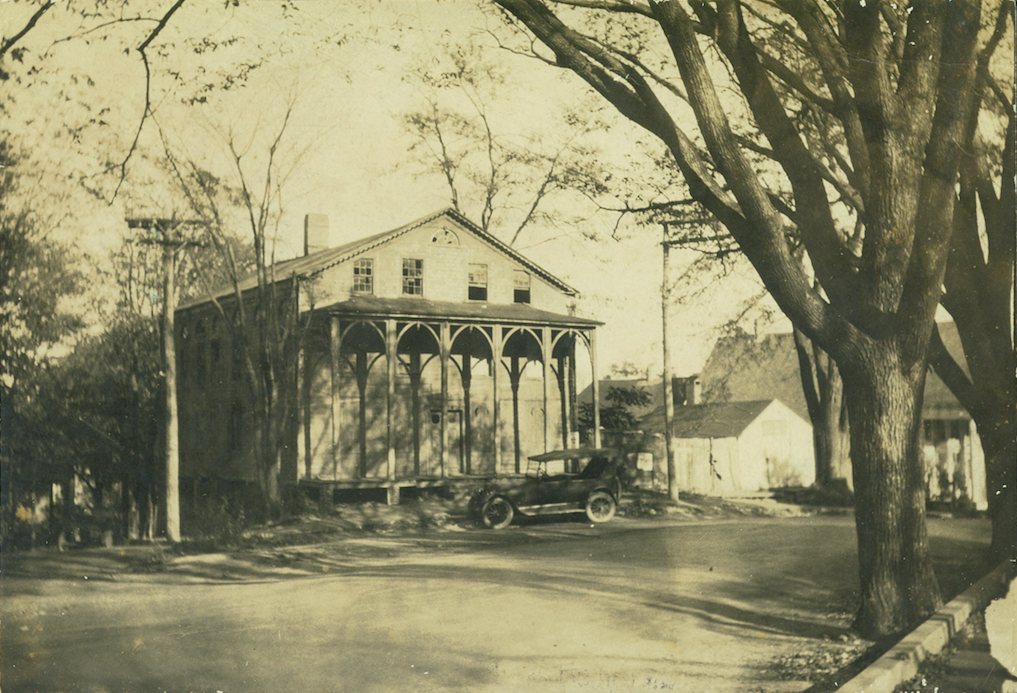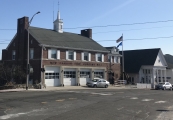Now & Then: Main Street and Locust Avenue
The shoe industry dominated New Canaan’s economy for more than a century.
The first factory opened in 1768 on Brushy Ridge Road, but by the early 1800s there were numerous factories in the downtown area. At the height of production, New Canaan shoemakers produced 50,000 pairs per year.
Five generations of the Benedict family created a shoe dynasty. At times, they employed as many as 100 people.
The Big Shop located on the corner of Main Street and Locust Avenue was the factory and retail outlet for Benedict & Co. Sadly, the handmade shoes in New Canaan couldn’t keep up with the mechanized means of production in the factories in Massachusetts. By 1924, there were no shoe factories left.
In the photo above, the columns of the 1868-built structure at 60 Main St.—known to many as the Knights of Columbus building, present-day home to Chef Prasad restaurant—can be seen through the trees at right.
“New Canaan Now & Then” is presented in partnership with the New Canaan Museum & Historical Society.



Thank you so much for taking the time,for sharing the history of our town,
Oh wow !! It’s such a pleasure to be part of the past with current !!
Chef Prasad
In the photo above, the columns of the 1868-built structure at 60 Main St.—known to many as the Knights of Columbus building, present-day home to Chef Prasad restaurant—can be seen through the trees at right.
Our fire station, that replaced the Big Shop, was designed by the New Canaan and New York City architect, Walter Bradnee Kirby and built in 1937. Kirby also painted the enormous murals inside Town Hall, depicting charming maps of our village in 1836 and 1936.
So interesting to publish this good information from the New Canaan Museum & Historical Society on a regular basis! Today’s information should remind us of the Maple Street Cemetery which is much in need of proper fencing. With some volunteer help, a group of us have put up signage at this cemetery which can be accessed through The Vue property’s public right of way via Cherry or Mead Streets. The next step should be fencing to enclose the entire cemetery which celebrates this shoemaking industry history and the burial ground’s founder Ezra Benedict